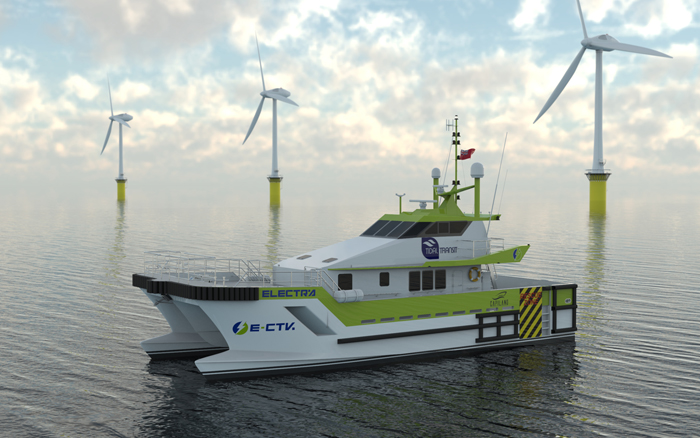(GOTEBORG, Sweden) — Volvo Penta will provide the power solution for a ground-breaking vessel for the United Kingdom’s offshore industry. The company will supply its advanced Inboard Performance System (IPS) for the world’s first retrofitted, electric crew transfer vessel (E-CTV).
For the project, Volvo Penta will supply a fully electric propulsion system in an existing vessel, replacing the older combustion engines with a 100 percent emissions-free solution.
The vessel is being developed for sea transport and crew transit service operator Tidal Transit. Cost of the retrofit is estimated at $9.79 million (U.S.) with $7.71 million coming from the Zero Emissions Vessel and Infrastructure (ZEVI) program. The program is part of the government’s plan (via its Department of Transport and Innovate UK innovation agency) to develop, deploy and operate clean maritime solutions.

Retrofitting will be done on Ginny Louise, a 65-foot diesel-powered Mercurio vessel. The old propulsion system will be replaced with a quad installation of Volvo Penta IPS 30 paired with fully electric motors and over 2 megawatts of onboard battery capacity. The completed vessel will be re-named e-Ginny and as well as being emissions-free will also benefit from a host of additional benefits that IPS delivers. This includes seamless movement and control, courtesy of the forward-facing, individually-steerable drives with twin counter-rotating propellers.
For the captain and vessel operators there will be changes to the helm station with the switch to Volvo Penta IPS. These will include Volvo Penta’s Joystick Control, for fingertip movements; Assisted Docking, for stress-free positioning; and the Glass Cockpit System for a smoother driving experience. It’s part of a helm-to-prop retrofit solution that delivers improved performance and driving experience.
As part of the overall Tidal Transit project, new charging infrastructure will be installed, both through an onshore charging station and an offshore wind turbine-based charger. In combination with the Volvo Penta IPS platform, this will greatly increase the range of the vessel and the amount of time it can spend at work. Once complete, the E-CTV will support crew transfers at an offshore U.K. wind farm for a period of three years.
– Volvo Penta
